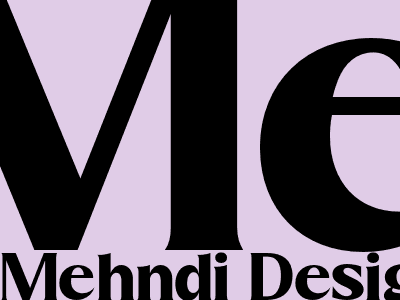Mehndi Designs: A Journey Through Intricate Body Art
Introduction - Mehndi: An Ancient Art Form
Mehndi, also known as henna art, is an ancient form of body decoration that has captivated civilizations for centuries. Originating in India, this intricate art form involves creating temporary designs on the skin using a paste made from the henna plant
Mehndi is not just a form of adornment but also holds cultural and spiritual significance. It is often used to celebrate special occasions such as weddings, festivals, and religious rituals. The intricate patterns and symbols used in mehndi designs often carry deep meanings and blessings.
In this comprehensive guide, we will explore the fascinating world of mehndi design, its cultural significance, and the techniques used to create these beautiful works of art.
The Cultural Significance of Mehndi
Mehndi in Weddings
Mehndi plays a central role in many wedding ceremonies around the world, particularly in South Asia. The intricate designs are believed to bring good luck, prosperity, and fertility to the couple.
Mehndi is applied to the bride's hands and feet several days before the wedding and is often accompanied by music, dance, and other celebratory rituals.
Mehndi in Festivals
Mehndi is also an integral part of various festivals in India and other countries. During festivals like Diwali and Holi, people adorn themselves with mehndi designs to mark the occasion and bring joy and festivity.
The Techniques of Mehndi Design
Natural Henna Paste
Traditional mehndi designs are created using a paste made from the leaves of the henna plant (Lawsonia inermis). The leaves are dried and ground into a fine powder, which is then mixed with water to form a paste.
Natural henna paste is safe for use on the skin and produces a reddish-brown stain that can last for several days.
Modern Henna Products
Today, various modern henna products are available, including pre-made cones and tubes, which make it easier to apply mehndi designs.
These products often contain additional ingredients that enhance the color and longevity of the stain.
Mehndi Application Techniques
Mehndi is applied to the skin using a variety of techniques, including freehand drawing, stencils, and cones.
Freehand drawing requires a steady hand and artistic skill, while stencils and cones provide more precise and consistent designs.
The mehndi paste is applied in layers, allowing each layer to dry before applying the next.
Intricate Designs and Patterns
Mehndi designs are incredibly diverse and intricate, with each region and culture having its own unique styles and patterns.
Some of the most popular mehndi designs include floral motifs, geometric patterns, paisleys, and representations of animals and nature.
Mehndi artists often incorporate elements of their own creativity and imagination into their designs, resulting in an endless array of beautiful and captivating patterns.
Health and Safety Considerations
While mehndi is generally safe for use on the skin, some individuals may experience allergic reactions to the henna plant.
It is important to do a patch test on a small area of skin before applying mehndi to a larger area.
Pregnant or breastfeeding women should consult with their healthcare provider before using mehndi.
Conclusion - Mehndi: A Timeless Art Form
Mehndi design is a timeless art form that has captivated civilizations for centuries. Its intricate patterns, cultural significance, and therapeutic properties make it a cherished tradition that continues to inspire and adorn people around the world.
Whether you choose to adorn yourself with mehndi for a special occasion or simply appreciate its beauty, this ancient art form is a testament to the creativity and artistry of humankind.

Komentar